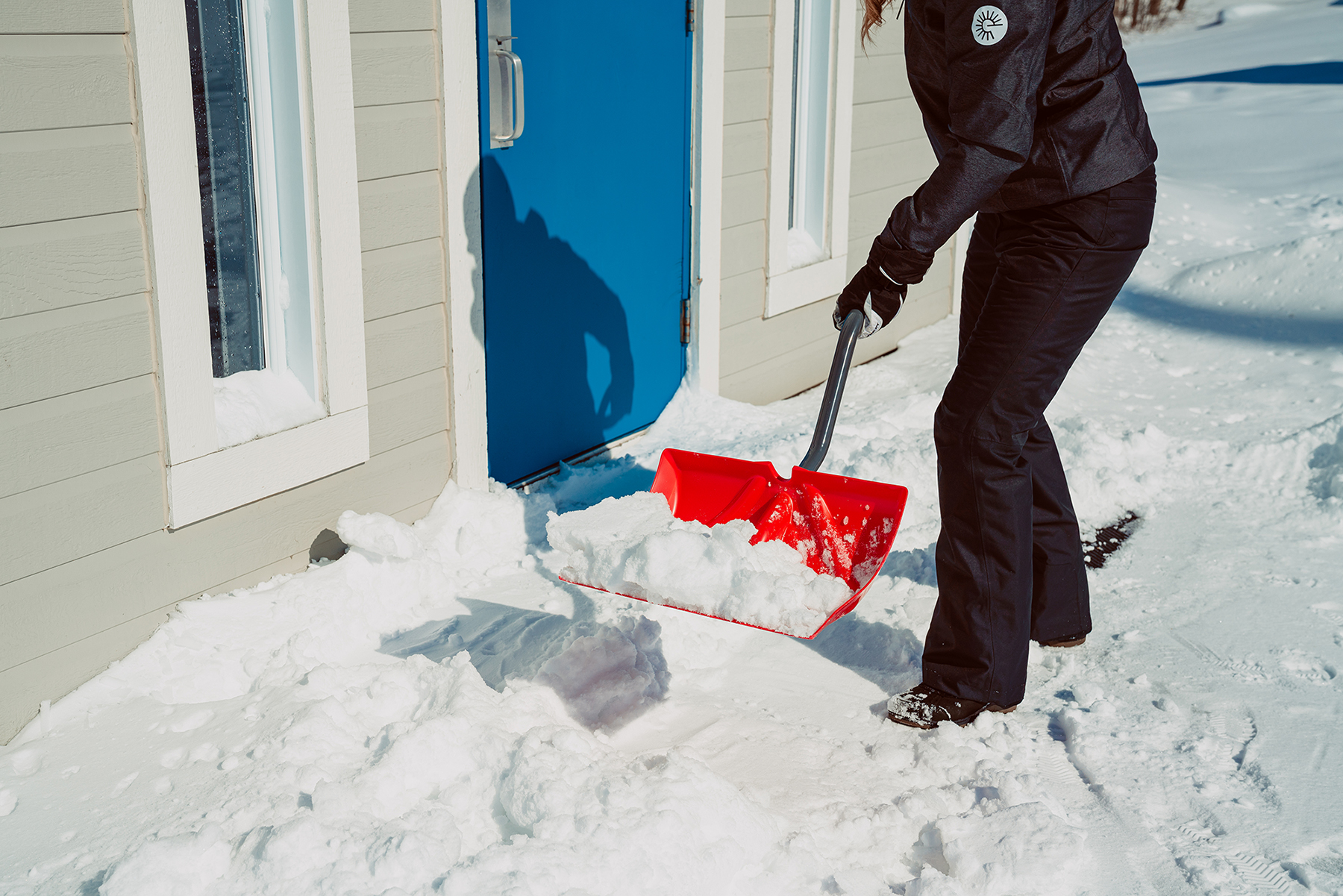
With snow storms in our future, here are some tips and tricks to minimize the risk of injury while shoveling this winter, as well as what to do should you injure yourself!
6 tips to avoid injuries:
One of the main causes of back injuries is when the back strains too much while in a bent forward position, especially if there is a torsion associated with this movement. When shoveling this winter, you can try to avoid this strain by:
- Pushing with the legs instead of the back, as if you were to do a squat or a lunge.
- Taking steps to turn instead of twisting your back.
- Taking less snow and therefore less weight onto your shovel at a time to avoid excess strain.
- Avoid over-arching or over-rounding your back.
- Pushing the snow along the ground as much as possible to avoid the lifting and twisting.
- Taking breaks as needed.
What to do if injured:
The first step is to avoid making the problem worse and take a break from shoveling. Take note of what strained the back (twisting motion, too much weight, etc.) to avoid replicating it in the future. Once inside, let your back rest by lying flat on your stomach or on your back. If you present with any of the following signs or symptoms, an emergency room visit for further investigation may be necessary:
Red flags:
- A (new) lack of sensation or strength in both of the legs
- A lack of coordination while walking
- Saddle anesthesia
- Urinary or fecal incontinence, or urinary retention
If none of these are present, you can try ice or heat to calm the back and consult your pharmacist for their recommendation on over-the-counter medication. Continue resting the back as needed while staying as active as possible without irritating the back. Avoid carrying heavy weights as well as bending and twisting the back. Some gentle exercises for the back can help regain mobility and decrease muscle tension and spasms that can occur after injury. The exercises should be pain-free and easy!
Some gentle exercises for your back
Cat and cow:
While sitting or on all fours, gently arch the back vertebrae by vertebrae as far as possible without pushing into pain. Hold a few seconds and then gently reverse the movement by flattening and rounding the spine, again without pushing into pain.
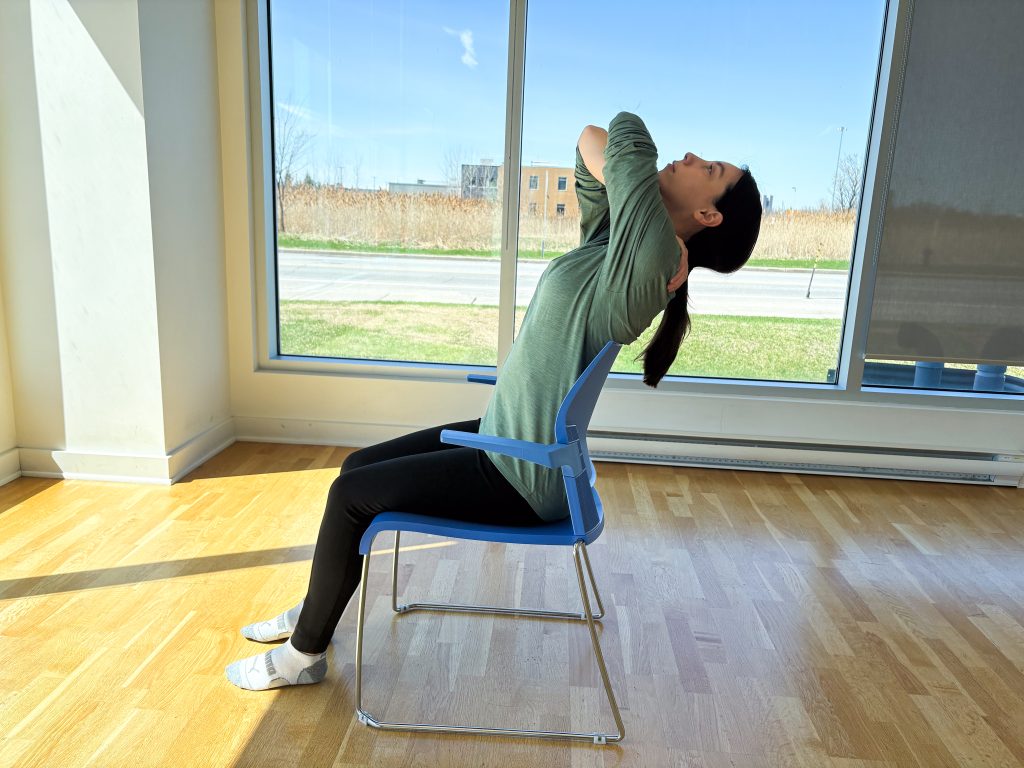
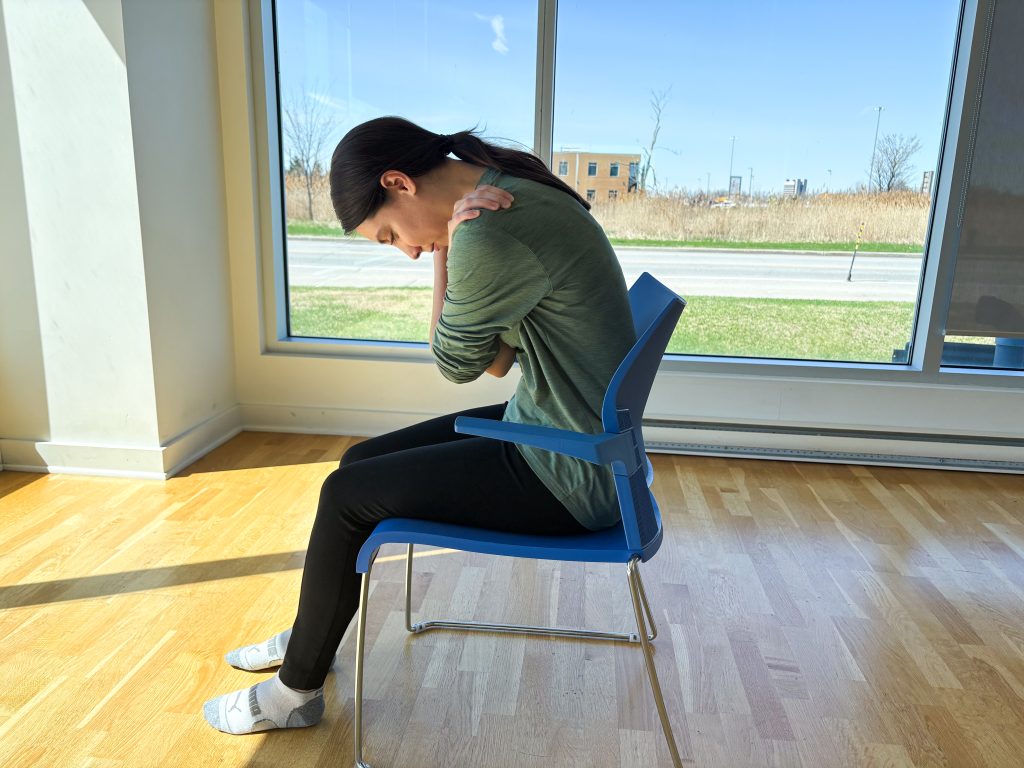
Child’s pose
From all fours, sit back onto your heels with your arms outstretched above your head and let yourself relax into the ground. If the stretch is too intense, you can add a pillow between your stomach and your thighs.
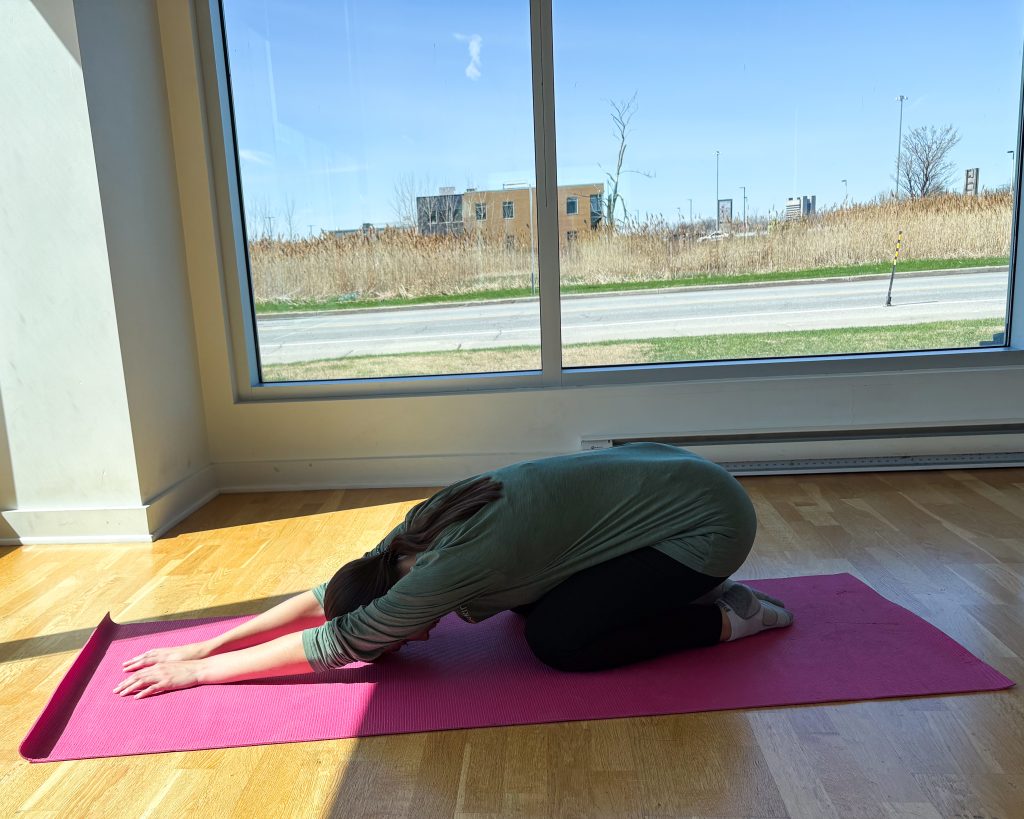
Gentle lumbar rotations
While lying on your back with your knees bent, so your feet are flat on the ground, allow your knees to fall slowly side to side, staying in a pain-free range of motion.
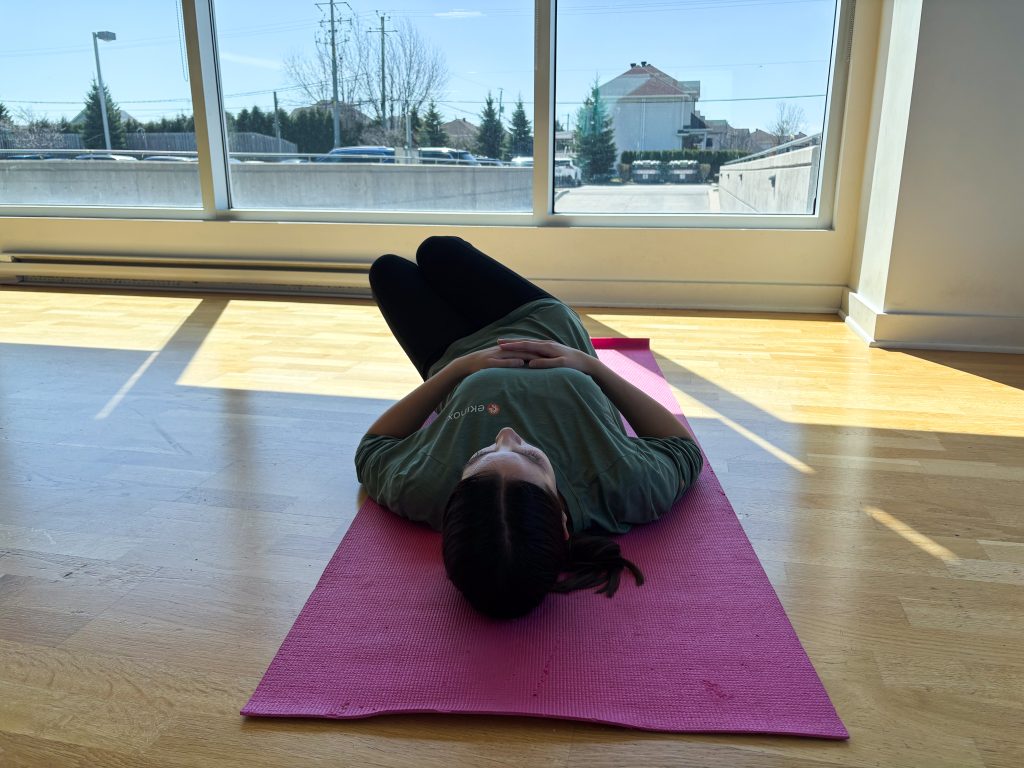
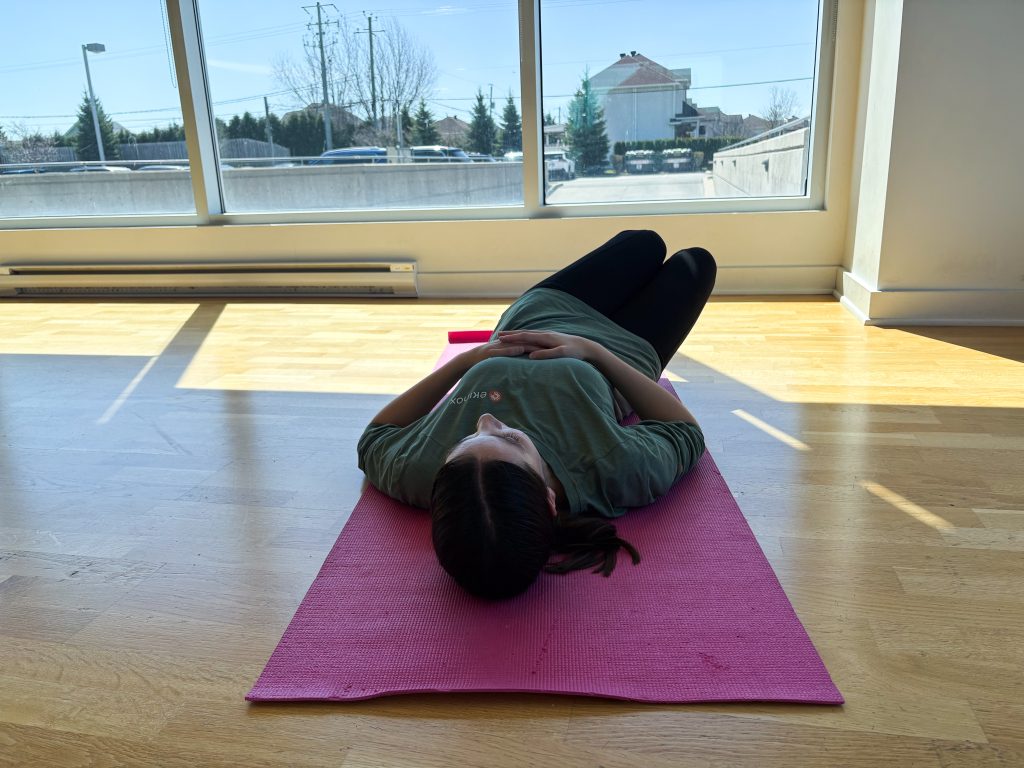
Glute stretch
While lying on your back, bring one knee to your chest while the other stays outstretched. Hold for a few seconds and repeat on the other side.
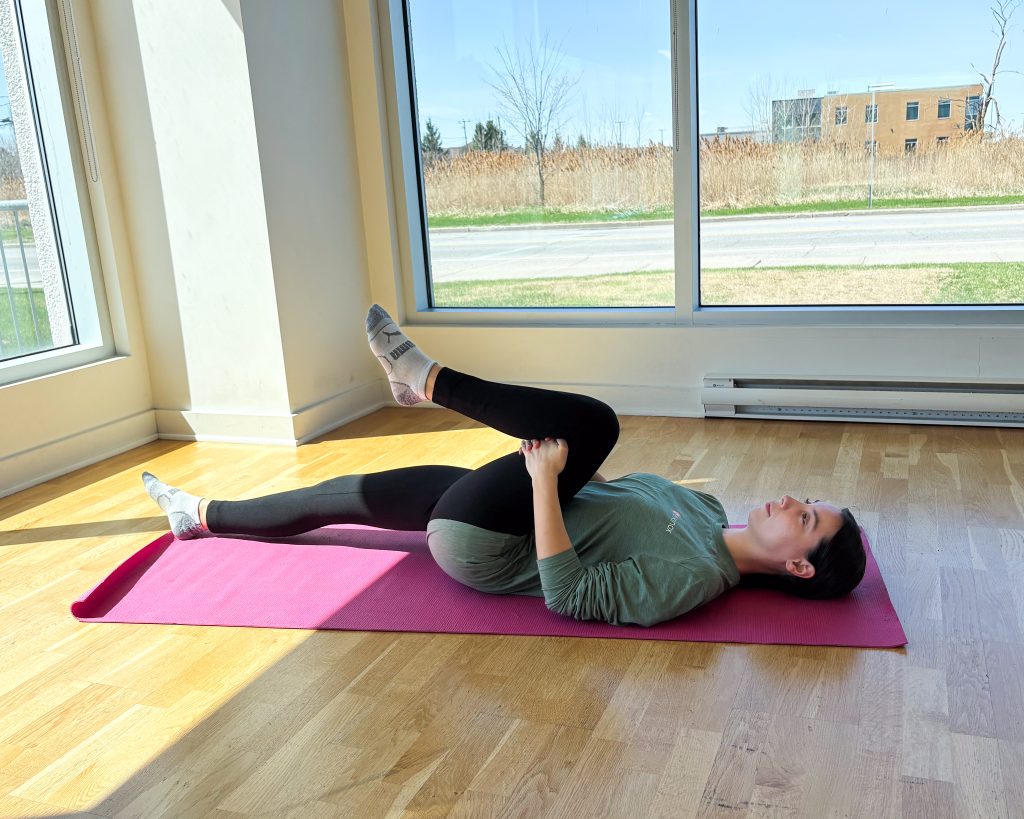
Figure 4 stretch
While lying on your back with one leg bent so that the foot is flat on the ground, bring your other ankle to rest on your thigh, just above your knee. To get more of a stretch, you can push on the knee that is in the air, or even bring your other knee to your chest. Hold for a few seconds and repeat.
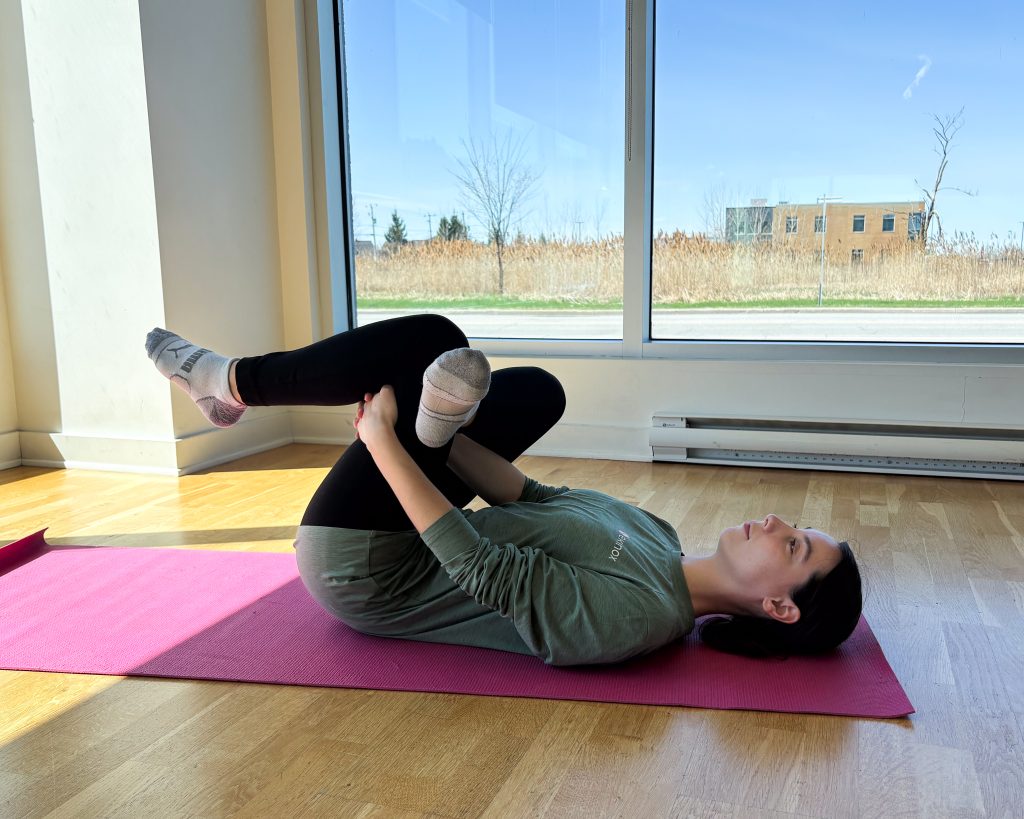
Back extension
While lying flat on your stomach, gently push up onto your forearms and let yourself relax in this position for a few seconds. If you’re able to, push up onto your hands to get a deeper stretch.
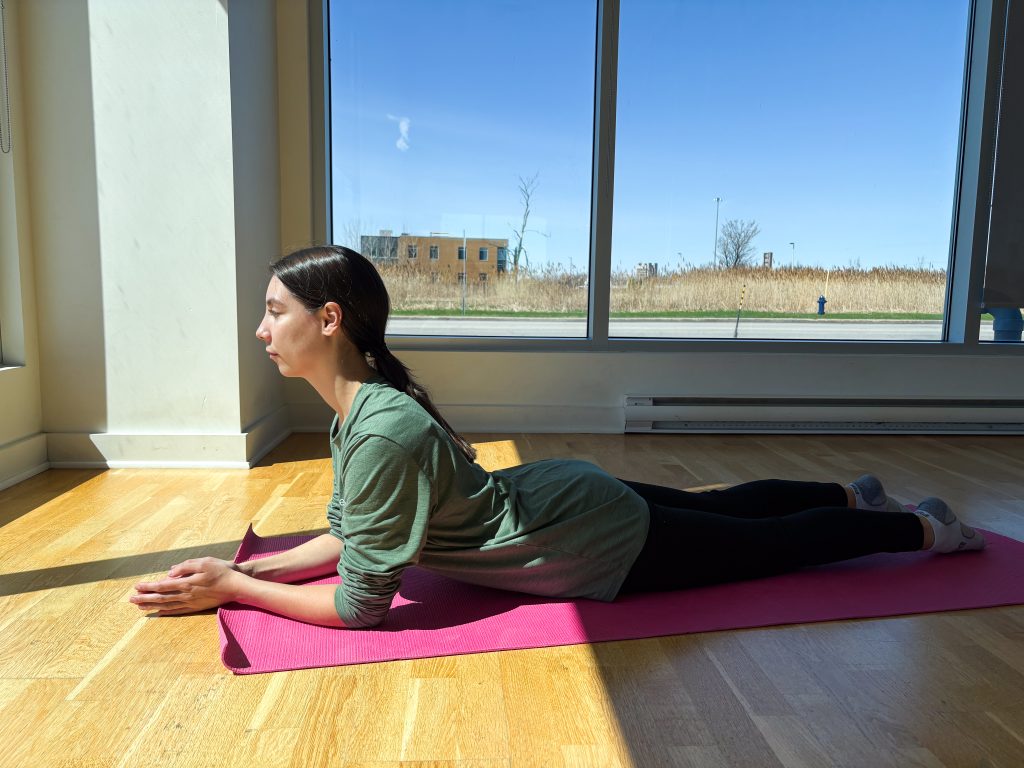
If your back pain does not go away or worsens as the days go on, consult a professional to help guide you on your recovery. You can book an appointment online at Ekinox with a physiotherapist, osteopath, massage therapist or acupuncturist!





